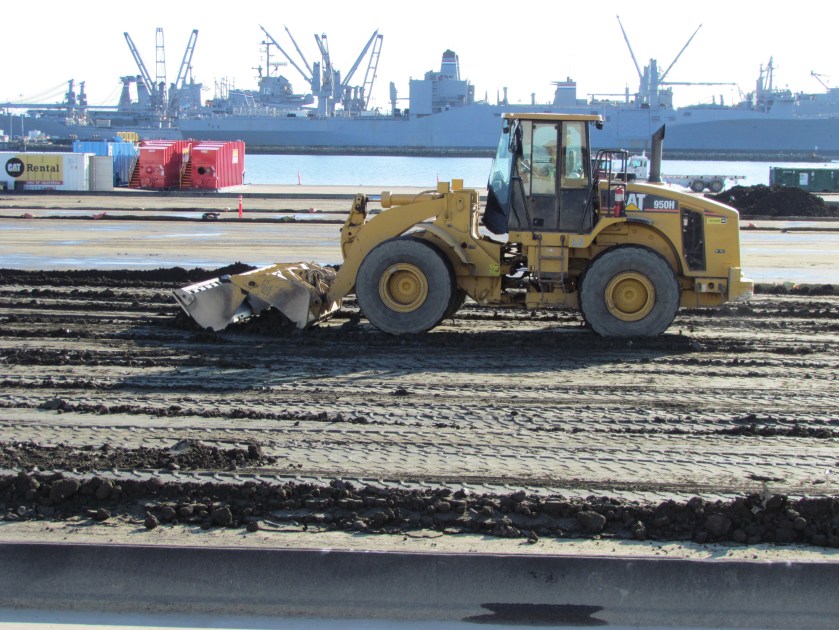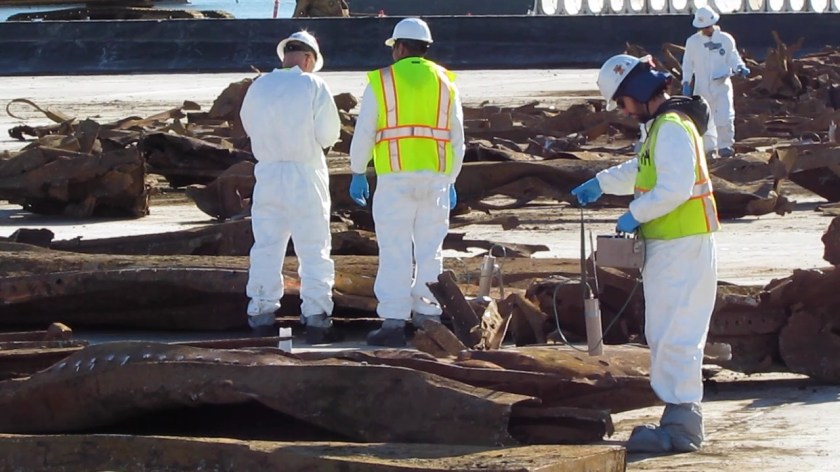The City of Alameda became the new owner of the Seaplane Lagoon at Alameda Point on April 13, 2016. It came from the Navy with a new condition that exceeds normal protocols for dredging in San Francisco Bay.
As with all cleanup sites, the Navy, city and regulators agreed to what areas needed to be cleaned up in the Seaplane Lagoon. The cleanup plan approved in 2006 was based on testing the sediment throughout the 110-acre lagoon. The problem areas were confined to about 10 acres at the northeast and northwest corners of the lagoon where storm sewers dumped contaminants prior to 1970s environmental laws. The agreed upon plan said that there would be no restrictions on the lagoon when cleanup was done.

After cleanup was completed, two years of discussions between the Navy, state and federal regulators, and the city led to an amendment to the official cleanup decision to include a detailed management plan for any future dredging in the Seaplane Lagoon. The city led the effort to create a sediment management plan. It stipulates that all dredge sediment brought to the surface will have to be spread out six inches thick on a drying pad and scanned for radium-226 radiation at a cost borne by the city.
The special radium testing goes beyond routine sediment sampling required throughout the Bay prior to issuance of any dredging permits. Radium scanning will be required even if the pre-dredging sediment samples test clean.
Radium was used in luminescent paint applied to aircraft dials and markers at the Naval Air Station. Prior to the federal Clean Water Act in the early 1970s, radium paint residue was poured into storm drains that emptied into the Seaplane Lagoon.
A cleanup effort in 2010 removed and replaced thousands of feet of storm drain that were found to contain unsafe levels of radium in soil deposits within the pipes. The cleanup of contaminants in the lagoon that followed took place where the storm drains end.
During testing of the 100,000 cubic yards of sediment removed near the storm sewer outfalls, 51 small objects with radium where found, from a compass to a toggle switch and pill-sized items.

As a result, the California Department of Public Health became concerned that the plan agreed to in 2006 overlooked the health risks of random objects that might be dredged up elsewhere in the future. They insisted that there was no way of knowing whether or not more radium objects were scattered around the other areas of the lagoon.
The Navy was not amused by the discussion of last-minute restrictions on a cleanup area it thought was done to everyone’s satisfaction, according to the Navy and regulator meeting minutes during the past two years.
At the May 2014 cleanup team meeting, Matt Slack from the Navy’s radiological affairs office explained that none of the 51 items recovered from the Seaplane Lagoon sediment “presented any more risk than an old-fashioned wrist watch or clock that used radium in the dials.” He argued that the low level of risk did not warrant special restrictions or a deed notice about radium.
Nonetheless, at the November 2014 cleanup team meeting, Karen Toth from the California Department of Toxic Substances Control stood firm in the department’s new position and suggested that the city would have to apply for a state radiological license, or an exemption, in order to be in possession of low-level radiation items at the bottom of the lagoon.
The city preferred a sediment management plan, rather than obtaining a radiation license. By early 2016, the city had achieved a consensus, which resolved future safety concerns by adopting a radium-screening plan for dredging.
City Hall is pleased with the added cleanup rule. According Jennifer Ott, Chief Operating Officer for Alameda Point, the proposed ferry terminal at the Seaplane Lagoon will not require dredging for ferryboat clearance for 30 years.
“Even if no dredging is needed for the ferry terminal, dredging for a marina or other unforeseen projects may occur in the future,” said Ott. “It is an asset to the city to have a Seaplane Lagoon sediment management plan finalized now, while Navy and agency reviewers who are familiar with the Seaplane-Lagoon-specific issues are still available.”
Radium is a naturally occurring element that is found in soil, concrete and natural stone. Trace amounts are permitted in public drinking water.
Originally published in the Alameda Sun.
Additional photos




